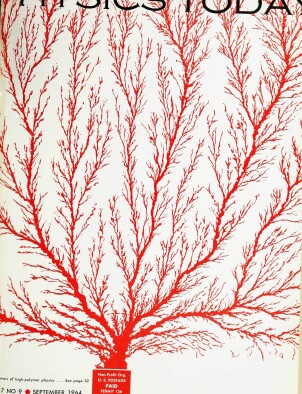SEP 01, 1964
Conventional magnets used in high‐energy physics and fusion research consume huge quantities of power. Hope has been raised by the recent discovery of high‐field superconductivity that these power requirements may be substantially relieved through the use of high‐field dissipationless magnets. The author, formerly a particle physicist, now works in the field of superconductivity at Bell Telephone Laboratories.
In the three years which have elapsed since the discovery of high‐field superconductors, considerable effort at various laboratories has been directed toward the development and production of superconducting magnets. Commercial magnets wound with Nb‐Zr wire are now available for fields up to 60 kG (up to 90 kG if supplemented by Nb‐Ti wire); test magnets fabricated from compound have already surpassed the 100‐kG mark. At present, superconducting magnets are used most extensively in solid‐state physics experiments that require a simple field configuration in a modest volume—longitudinal field over a one‐inch bore is typical. The superconducting magnet of this type is compact and inexpensive, and it will find its way into almost every basic science laboratory. Though impressive, present achievement and future outlook of superconducting technology is somewhat disappointing to those who anticipated immediate applications of high‐field superconductors in fusion research, high‐energy physics, and the whole range of ac devices, including transformers, generators, and transmission lines. Production and use of large‐volume magnets have been hampered by the unexpected phenomenon of current degradation—superconducting wires often will carry considerably smaller current when they are wound into magnets. This is caused by instabilities rather basic to the present high‐field materials. Particularly discouraging are the poor ac characteristics of these materials. Nevertheless, superconducting magnets will figure more prominently in future high‐field installations as they generally yield over‐all economy compared to the conventional magnets. While initiating a new technology, the discovery of high‐field superconductors has also precipitated new understanding (and, in some cases, new physics) in the field of hard superconductivity. After reviewing the present status of superconducting magnets, I shall devote the latter half of this article to an exposition of hard superconductivity.
This article is only available in PDF format
© 1964 American Institute of Physics




